It is instantly recognisable; the Italianate temple perched on the edge of a cliff, with dramatic views of the North coast around it and the beaches, railway line and sea below.
The Mussenden Temple has balanced on this cliff-edge at Downhill in Co Derry since the 1780s, when it was built by the “Earl Bishop”, Frederick Augustus Hervey — the Bishop of Derry and the Earl of Bristol — for his young woman relative, Frideswide Mussenden.
So the temple is ... gazing out to an infinity that’s inexplicable and awesome in a wild, beautiful way
“When he saw it first it’s said he jumped with joy and he cried when he got on that cliff top,” says writer and broadcaster Ken McCormack, who is a trustee of the Hervey Heritage Group.
“It’s what they called, in those times, sublime — it’s awesomeness with the grandeur, the greatness, the massiveness of, in that case, the sea.
“So the temple is ... gazing out to an infinity that’s inexplicable and awesome in a wild, beautiful way.”
Today it is a tourist attraction, a wedding venue and a symbol of Northern Ireland, but it is also far closer to the edge than it has ever been.
“When it was built you were able to drive a horse and cart around the seaward edge of it so there was clearly an extra bit of ground there that’s no longer there,” says Andrew Cooper, Professor of Coastal Studies at Ulster University.
“The earliest maps we have from there are from the 1830s and if you look at those you can see there’s a little bit of ground on the seaward edge of the temple, about 3m, and now there’s nothing.”
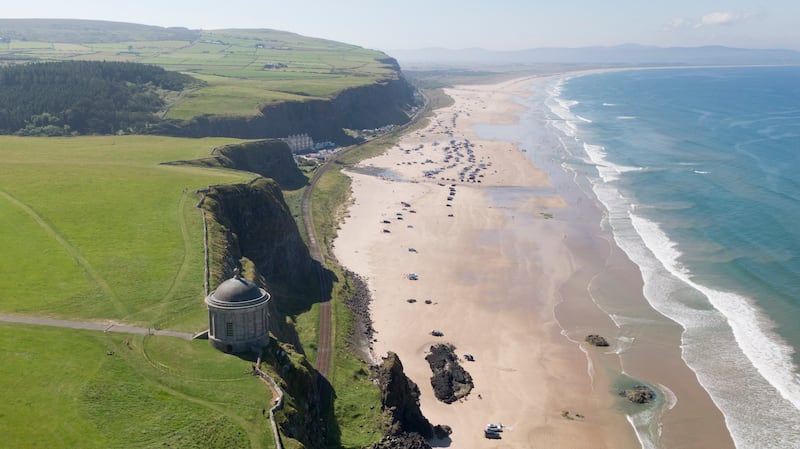
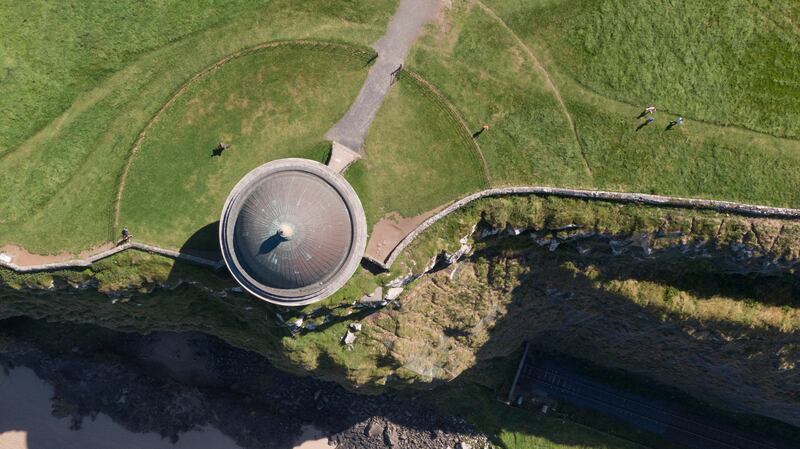
Time has gradually eroded that 3m. In 1997, the National Trust told The Irish Times that “50 years ago, there was enough land on the seaward side of the temple to have a picnic. Now there is only a couple of feet.”
Now, standing by the wall which runs along the cliff edge it is difficult to imagine how anyone could once have walked there, never mind picnicked or driven a horse and cart.
Part of that wall is gone, presumably into the sea, and a fence has been erected in its place; at the temple’s farthest side, the appearance is of a structure which is now perched dangerously close to the cliff edge.
When you stand up here you get a truly spectacular view along Benone Strand right out to Magilligan Point
“It is a spectacular location,” says Prof Cooper. “When you stand up here you get a truly spectacular view along Benone Strand right out to Magilligan Point ... Magilligan is the biggest accumulation of sand anywhere in Ireland, so it’s a really impressive view.
“The old Bishop knew what he was doing, building there.”
He did indeed. Constructed as a library and intended as a place where Frideswide could come and stay, she died aged 22 before it was completed. Today, a question mark still hangs over the relationship between her and the Earl Bishop.
“There’s not the slightest doubt that both had a great affection for one another,” says McCormack. “A scandal broke out concerning her and the Bishop, he was castigated very badly in the papers ... there’s always been a cloud of mystery over the relationship.”


He describes the Earl Bishop as a “very colourful, multi-edged character ... he had a mischievous sense of humour, he was eccentric, a bit irascible in some ways, but also very fair and compassionate.”
Many are the stories told about the flamboyant clergyman; he had many mistresses, including Lady Emma Hamilton — later associated with Lord Nelson — he was known for his collection of classical art and sculpture, and organised races on Downhill strand below.
“When I’m up here I’m always thinking of him looking out over the sea,” says McCormack.
The National Trust, which owns the temple and the wider Downhill Demesne, including the Earl Bishop’s now ruined castle, keeps it under continual monitoring. The trust is “satisfied that the building is in good condition” and considers “the risk of erosion and subsequent damage to be low”.
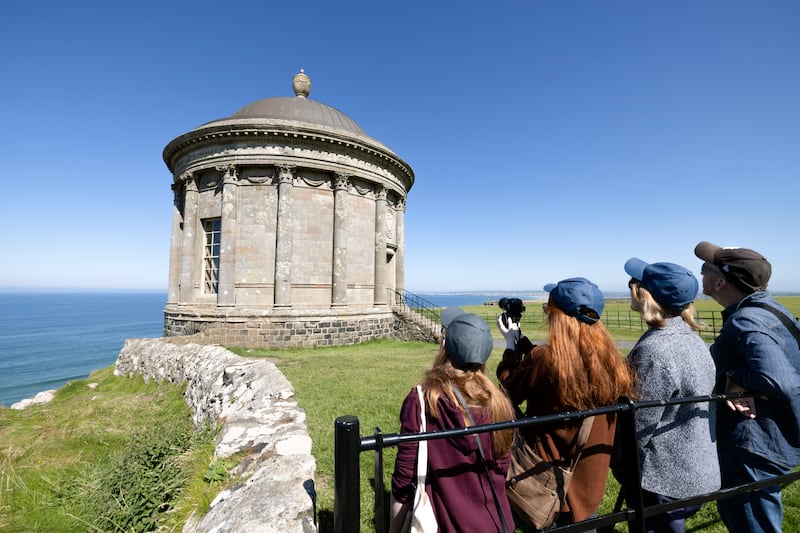
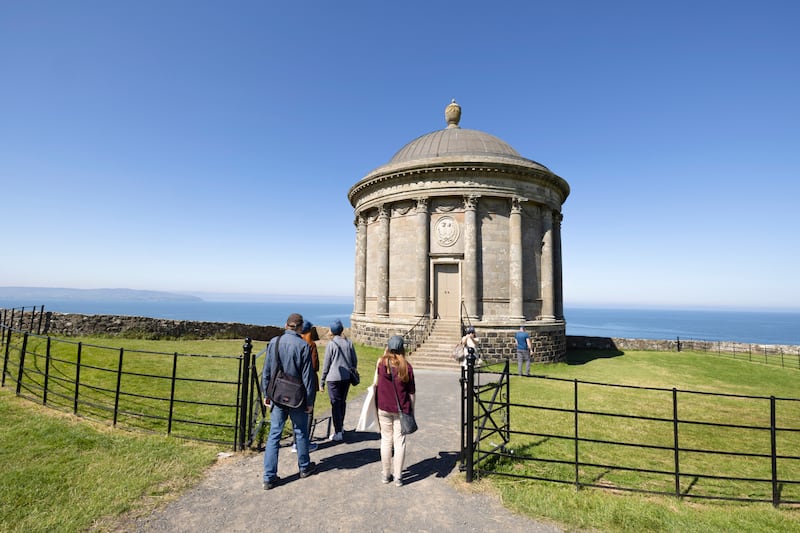
If it discovers any discrepancy or movement, “we will consider how this can be mitigated against, whilst implementing conservation principles and balancing the risk of intervention against the significance of this iconic 18th century building,” a spokeswoman for the National Trust said.
Twenty-five years ago, among the contingency plans under consideration was to physically move the temple back from the cliff edge. “This would be achieved by lifting the temple on a series of jacks and actually rolling it back from the cliff edge,” a National Trust spokesman said at the time.
Another option was to add to and strengthen the cliff face; this, says Prof Cooper, was what was eventually done.
“They did an assessment of its stability and decided to put in things like rock bolts and putty, it’s not putty but a type of material to seal up the cracks in the rock and slow down the processes of cliff retreat which I suppose it has done — it’s still merrily sitting there.”
One option is to let it be and allow pieces to gradually fall in the sea, which has all its attendant risks about safety and access and so on
So far, so good — but what of the future? The retreats of cliffs, he says, can be quite sudden. “Very often the failure takes place in one go where a big piece of material falls down.”
Cliff monitoring would provide some warning; if it were to come to the point where the building was threatened there are three choices, says Prof Cooper.
“One option is to let it be and allow pieces to gradually fall in the sea, which has all its attendant risks about safety and access and so on.
“Another is to continue to try and defend it, which has problems because the cliff is so high ... you need to defend the whole face down below [the temple]” which would be both expensive and an eyesore.


“The third option is to move it, which sounds a bit dramatic but it’s not without precedent, they have moved things back [from cliffs] in various parts of the world.”
He cites Cape Hatteras lighthouse in South Carolina, the tallest brick structure in North America.
“That was threatened by coastal erosion — they kind of jacked it up, put it on to railway tracks and moved it on to fresh foundations ... so it would be an option for the National Trust to potentially move it if it needed to be moved.”
This, he says, would fit its policy for working with nature wherever possible: “The idea of moving something back rather than defending it in its current position would be more consistent.”
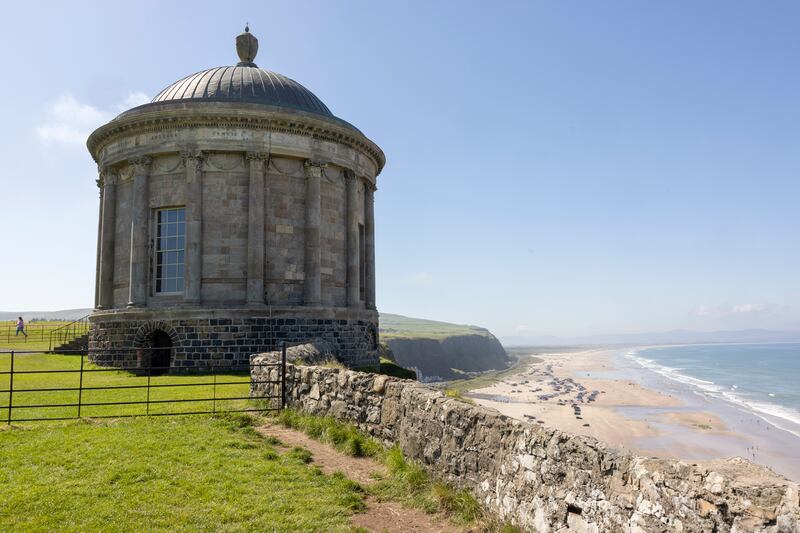

Yet, says Prof Cooper, there are factors in the temple’s favour, not least that the cliff is not being directly attacked by waves at its base but is protected by the beach and the railway line.
He makes the comparison with Dunluce Castle, further along the coast in Co Antrim. “The kitchen apparently fell into the sea during a banquet back in the 1800s or 1700s, now whether it’s fact or fiction or a mixture of both something happened, and a substantial piece of Dunluce castle did fall into the sea, the difference there is that cliff is being exposed to direct wave action.”
Prof Cooper and his colleagues are currently working on an official project which will, for the first time, measure shoreline change around Northern Ireland’s coasts from the 1830s until the present day.
The data will, in turn, advise people on where is safe to build along the coast, and “prompting this kind of question, what do we do with things that are at risk from shoreline change?
It really is one of those iconic images of Northern Ireland
“We’re still in the midst of that study ... but we will get a better idea of the long-term rates of change along the coast, including at Mussenden Temple.”
It also raises questions about the impact of human activity on the natural world. Though climate change is not a factor in the erosion of the cliff, footfall — or indeed horses and carts — between the temple and the cliff edge “might have helped destabilise the ground” and could have helped speed it up, he says.
“That said, it is largely a natural process, but the study that we’re doing ought to show up if [the erosion] is faster than usual at the Mussenden Temple, which might point to more human intervention compared to other places where there aren’t so many people walking along the cliff edge.”
Though they can no longer walk between the temple and that cliff edge, the temple remains hugely popular with both locals and tourists alike.
Today it plays a prominent role in Tourism NI’s advertising campaigns and has “really benefited from the growth in staycations and the significant growth we’ve seen recently in visitors coming from the Republic of Ireland in particular,” says Naomi Waite, marketing manager with the tourism body.
“This summer, over half our visitors from the Republic were coming here for the very first time and with places as stunningly beautiful as Mussenden Temple to visit, it’s no wonder.
“It really is one of those iconic images of Northern Ireland.”

















